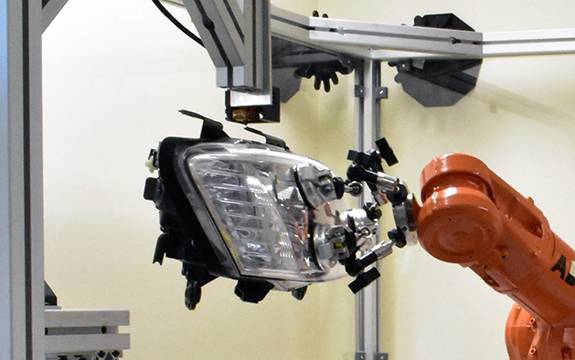In a world-first, a joint industry-research 3D printing robot, Repairbot, has successfully 3D printed a replacement lug on an automotive headlamp assembly as part of a project underway at Swinburne University.
The Repairbot project is an industry research collaboration between Tradiebot Industries and Swinburne University of Technology, supported by AMA Group, and the federal government via the Innovative Manufacturing Cooperative Research Centre (IMCRC).
An in-house formulated polypropylene composite material, developed by Swinburne’s materials scientist Dr. Mostafa Nikzad, was used in the process.
To guarantee the compatibility with automotive grade injection moulded plastic, Dr. Nikzad and his team had to create a material with the right characteristics for 3D printing polypropylene, as well as the strength and toughness required to meet automotive quality standards.
The new material enabled the robotics team, led by Swinburne’s Dr. Mats Isaksson, to engineer the 3D print of a replacement lug directly on a headlight housing. By using a robotic arm to precisely manipulate the headlight under a stationary 3-D print head, complex geometries can be printed without the need for support material.
Tradiebot founder Mario Dimovski said: “The Repairbot will allow repairs to be conducted on damaged automotive plastic parts not currently repairable by technicians. The benefits will affect repair shops, consumers and flow on to the environment diverting these damaged parts from landfill. It’s a win, win for everyone.”
Repairbot project leader Dr. Isaksson called it a major step towards fulfilling the project goal of a complete prototype for automatic repairs of headlight assemblies.
According to Dave Calder from AMA Group, the project is 18 months away from commercialisation. It is now moving into the next stage of validation testing of the material in application and fine-tuning the digital development of the software to manage design and repair procedures.


